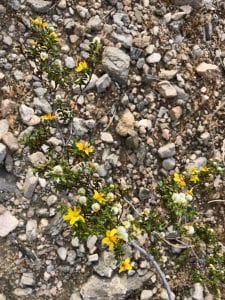The end of the semester always comes fast and furious, with myriad assignments to grade and curriculum to cover as 15 weeks culminates with “trying to get it all done.”
And usually, I get sick in the midst of it.
I used to have my body trained to not get sick until the end of the semester, operating on pure adrenaline until final grades were submitted and then collapsing in a heap of exhaustion to spend all of winter break ill. Now, with a 3-year old, exhaustion comes early, and I have, for the last two years, spent November and early December fighting some type of laryngitis + virus that keeps me away from my normal morning runs and forces me to slow down, sleep more, and be more intentional in speaking.
And with that, I remember to reflect.
This morning, after grading a couple of fieldwork reflection assignments from my preservice candidates, I was struck by both students’ focus on the importance of recognizing students’ assets, social-emotional learning and literacies.
I teach secondary literacy classes, and generally explore disciplinary and content area (general) literacy strategies to support student learning, with a mix of 21st century literacies including technological literacy and the 4Cs from the P21 framework. However, I’ve been really thinking about my teacher education practice because of some professional development opportunities that I’ve had over the summer (namely the Transformative Teacher Educator Fellowship summer institute and the Center for Reaching & Teaching the Whole Child summer institute, particularly with a focus on the CASEL social and emotional learning competencies) and have been trying to integrate mindfulness practices and a focus on more humanizing approaches to consider students as whole people, particular students of color, English Language Learners and students with special needs/disabilities, who have often been marginalized or defined by what they are not rather than by who they are.
From week to week, this sometimes feels like exploring the rocky terrain and sinking sands of a trail I don’t know (as I did last week when trying to come back from my illness). But this morning, I read these fieldwork reflections and was inspired by my credential candidate students who framed the students they worked with (in 1-on-1 tutoring experiences) in terms of their assets, and funds of knowledge they brought to the classroom from their homes and communities. Both reflected on the importance of humanizing approaches and how it will shape their practices. One drew from a student’s religious background to show how math and tessellations were a part of Islamic art, engaging the students’ interest in a concept that hadn’t previously seemed relevant. Later this same candidate, after an incident involving the student he was working with and another adult, was able to pull the student aside, discuss his behavior, acknowledge his emotions, and then work with the student to resolve the situation so that the student could reintegrate himself into the classroom. The other student noted the importance of making sure that the student she worked with felt stable (and grounded) before moving on to the academic content at hand, learning patience and persistence and that the lesson wouldn’t always move on exactly as planned.
In seeing my candidates’ reflections, it reminds me of the importance of the work of educators. When we remember to acknowledge what students bring to the classroom, to work with it (rather than trying to work around or ignore it), and to respect students’ humanity, we build and rise together. It is inspiring. It is energizing. It is humanizing.
Even in our most human moments, at the end of the semester.

